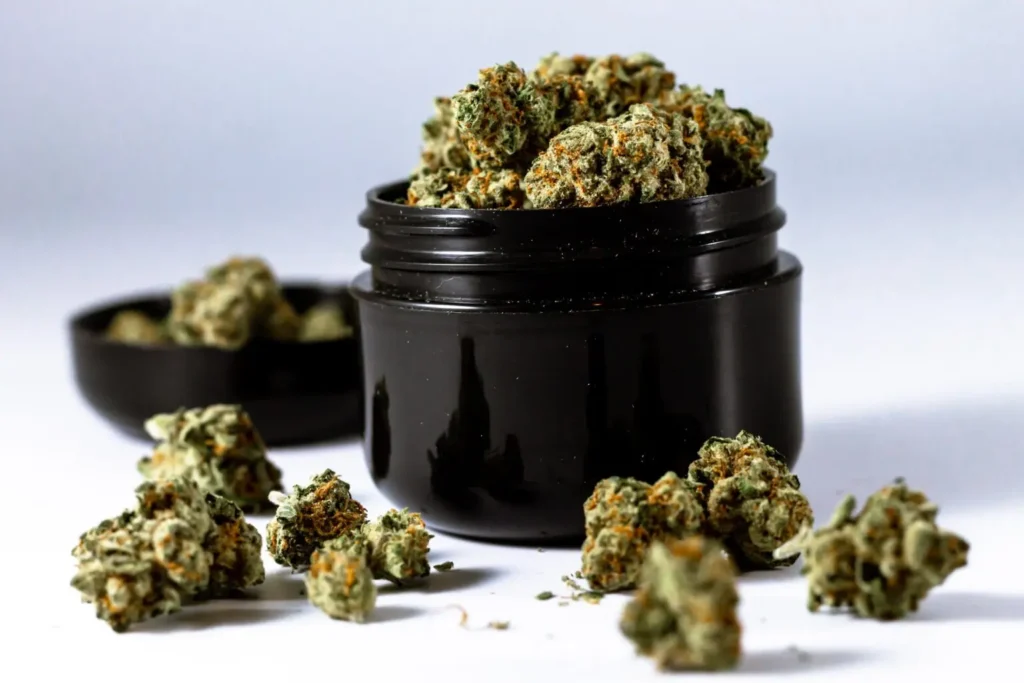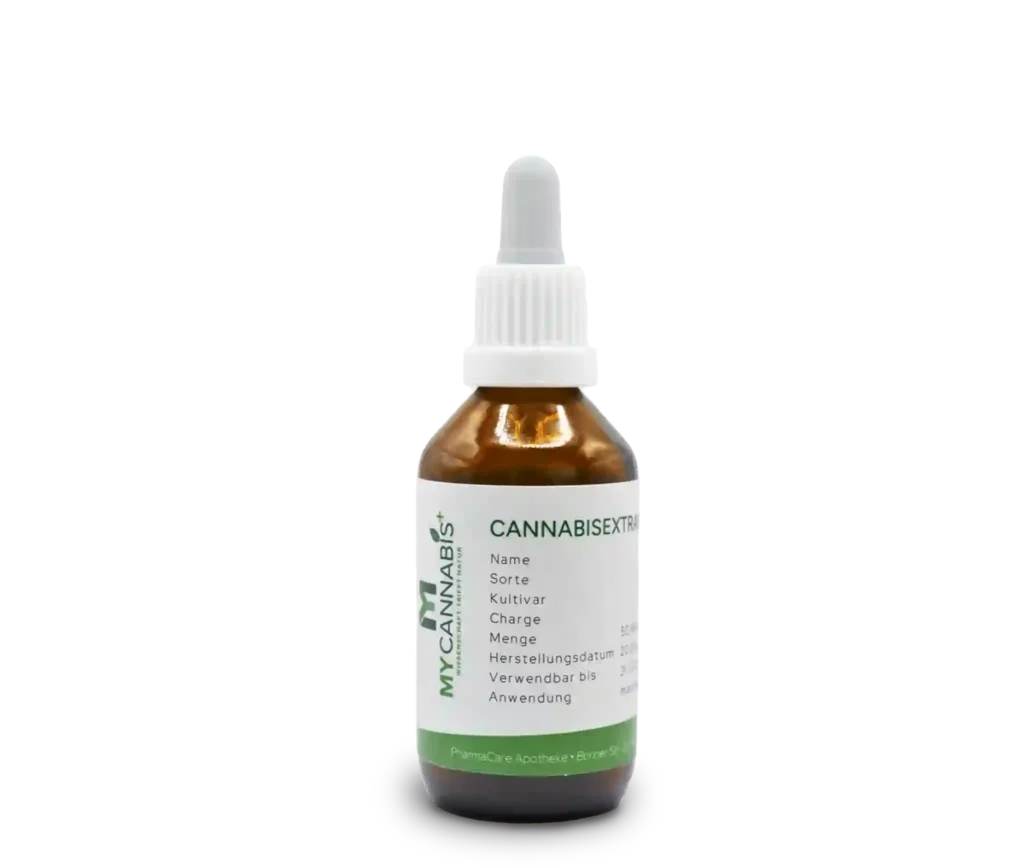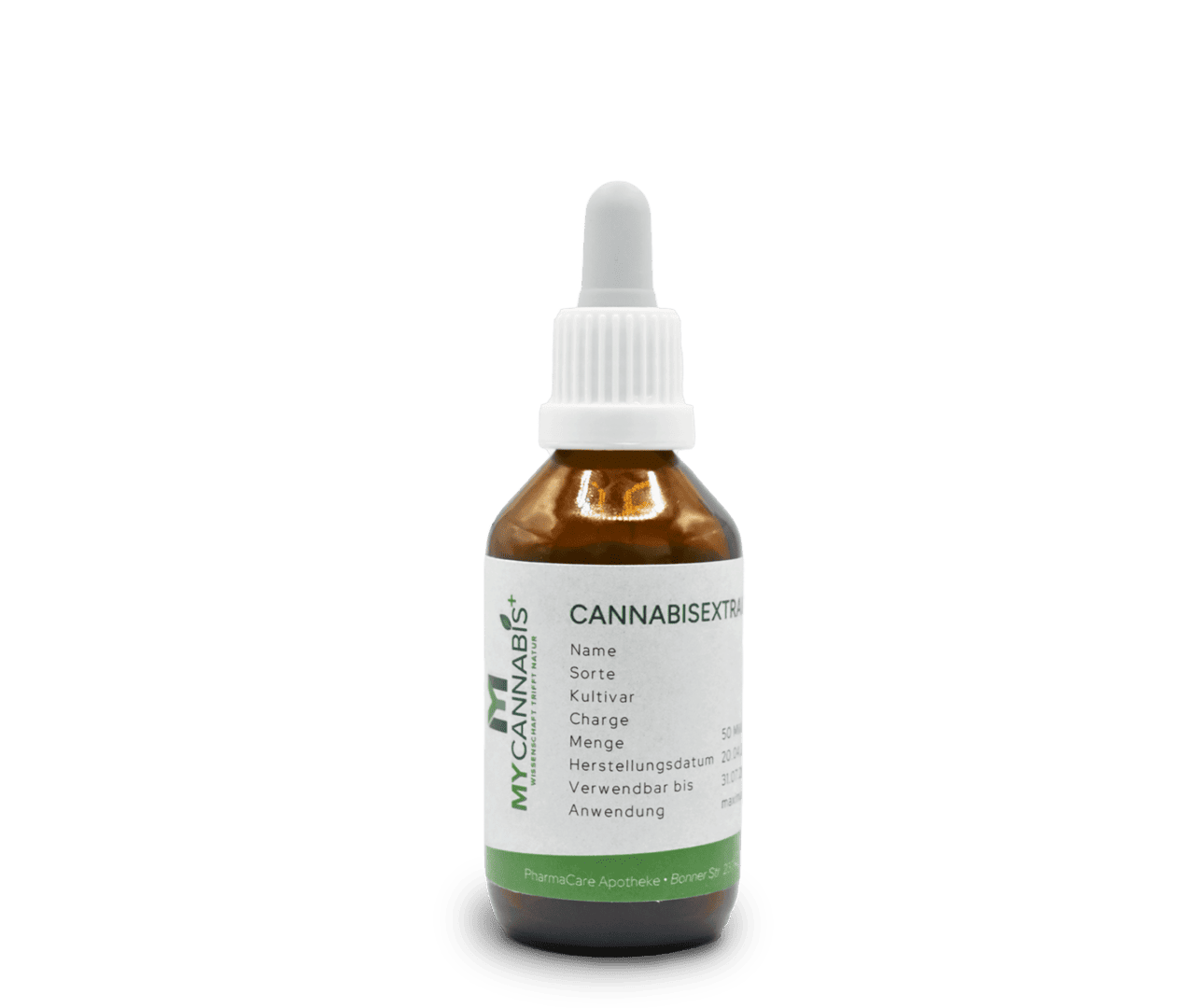
Cannabis has been used for medicinal purposes for centuries. It contains compounds called cannabinoids, which have been shown to have potential health benefits. Medical cannabis has been legalised in many countries and states for the treatment of chronic pain and there is a growing body of evidence supporting its use in this area.
Medical cannabis, also known as medical marijuana, refers to the use of the cannabis plant or its components, such as cannabinoids, for medicinal purposes. Cannabis has been used for centuries for potential pain relief, but only recently has medical science begun to understand its potential.
This article discusses the benefits of using medical cannabis for pain relief, what types of pain it can help with, and how to use it as a treatment option. We also take a closer look at how cannabis compares to traditional opioid-based medications in the treatment of chronic or acute pain.
Medical cannabis is the term used to describe the use of cannabis for medicinal purposes. It involves the use of various components of the plant, such as CBD and THC, to treat symptoms associated with certain medical conditions.
Research has shown that medical cannabis can effectively reduce pain intensity and improve patients' quality of life (1).
Medical cannabis works by interacting with our endocannabinoid system, which plays an important role in regulating various physiological processes in the body (2).
By activating specific receptors in this system, cannabinoids such as CBD and THC can help reduce inflammation (3), relieve pain (1) and improve mood (4).
Although more research is needed to fully understand how medical cannabis works at a molecular level, there is strong evidence supporting its potential therapeutic benefits for people struggling with chronic pain.

Medicinal cannabis works by interacting with the body's endocannabinoid system, which plays a role in regulating various physiological processes such as pain, inflammation and mood (2). The cannabinoids in medicinal cannabis bind to the CB1 and CB2 receptors in this system and can reduce pain and inflammation.
Medical cannabis comes in different forms, each with its own benefits and effects. The most common form is the dried flowers, which can be vaporized for immediate pain relief. Cannabis oil is another popular form that can be taken orally or applied topically to relieve pain and inflammation.
For those who do not want to inhale the fumes, capsules with cannabis extracts are also available. These deliver a constant dose of active ingredients without the need for an inhaler. Various forms of medical cannabis have been shown to be effective in treating chronic pain associated with diseases such as multiple sclerosis (6) or cancer-related nausea (7).
Medical cannabis research has shown promising results in relieving chronic pain, including migraines, neuropathic pain, cancer-related pain and pain associated with conditions such as multiple sclerosis. Cannabinoids found in cannabis, such as THC and CBD, interact with the body's endocannabinoid system, which plays a role in pain regulation (8).
Medical cannabis for neuropathic pain:
Neuropathic pain is caused by damage to the nervous system and can be difficult to treat with conventional drugs.
Medical cannabis contains compounds that interact with the body's endocannabinoid system, which plays a role in regulating pain perception. Migraine is another form of chronic pain that may respond to medical cannabis treatment.

Arthritis is a common condition that causes inflammation of the joints and can lead to chronic pain. Medical cannabis has been shown to have anti-inflammatory properties that can help reduce swelling and relieve the discomfort associated with arthritis. In addition, some strains of medical cannabis contain high levels of cannabidiol (CBD), a non-psychoactive compound that has been studied for its potential as a painkiller. Overall, medical cannabis offers promising benefits in the treatment of various types of chronic pain conditions, such as neuropathic pain, migraine and arthritis, through its interaction with the body's endocannabinoid system or its anti-inflammatory properties due to its CBD content.

Research has shown that cannabis can provide pain relief in cases where traditional medicines have failed. Several clinical trials have examined the effectiveness of cannabis for chronic neuropathic pain, cancer-related pain and other conditions that cause severe discomfort.
A meta-analysis published in the Journal of the American Medical Association found that patients who used medical marijuana experienced significantly greater relief from chronic neuropathic pain than those who received a placebo (9).
Cannabis has been studied as a potential treatment option for various types of pain, including, but not limited to, headaches, spasticity associated with multiple sclerosis, inflammation associated with arthritis, and joint problems and discomfort associated with fibromyalgia. While research is still ongoing to see how effective it can be in relieving different types of pain in the long or short term, it looks promising.
Some studies suggest that marijuana may produce similar results compared to traditional opioids or NSAIDs (non-steroidal anti-inflammatory drugs) without the opioid overdose deaths or gastrointestinal complications that occur with long-term NSAID use(10) .
The endocannabinoid system (ECS) plays an important role in pain management. By binding to cannabinoid receptors, both endocannabinoids and phytocannabinoids can block the release of pro-inflammatory substances
Treating chronic pain with cannabis can be an effective alternative to traditional pain management methods.
Studies have shown that cannabinoids found in cannabis can reduce inflammation and relieve chronic pain caused by diseases such as arthritis, neuropathy and fibromyalgia.
However, it is important to note that the effectiveness of cannabis for pain relief in chronic conditions varies from person to person (12).

The dosage and method of consumption are also crucial when using cannabis to treat chronic pain. It is recommended to start with low doses and gradually increase them until the desired effect is obtained. Methods of consumption include vaping, edibles, tinctures or applying creams or patches directly to the painful area. It is also advisable to consult a doctor or health professional if you are considering using medical cannabis to treat chronic pain.
Cannabis is known to relieve nerve pain by interacting with the body's endocannabinoid system. This system plays an important role in regulating pain perception, inflammation and immune function.
The cannabinoids in cannabis bind to the receptors of this system, reducing the transmission of pain signals and promoting relaxation.
When choosing a strain for the treatment of nerve pain, different strains vary in their effectiveness. Indica strains are often preferred for their high levels of relaxing terpenes and cannabinoids such as CBD, which reduce inflammation without causing a psychoactive effect.
While sativa strains tend to be less effective at relieving chronic pain, they do offer other benefits such as B. Improving mood or energy levels, so there is no one-size-fits-all approach to what works best.
The cannabinoids in cannabis oil are potentially effective in relieving back pain (13). CBD and THC are the two main compounds that interact with the body's endocannabinoid system (2), which plays a key role in regulating pain sensation. When consumed, these cannabinoids help reduce inflammation and pain signals throughout the body.
There are several ways to use CBD oils for acute or chronic back pain: oral intake, topical application to the affected area, and sublingual administration. Each method has advantages and disadvantages that depend on personal preference and the individual's specific symptoms.
THC and CBD work effectively together when it comes to relieving inflammation caused by arthritis (14). Both of these cannabinoids have been found to have anti-inflammatory properties that can help relieve pain in arthritis patients. Using extracts infused with both THC and CBD has several advantages, including longer-lasting effects compared to vaping.
In addition to consuming edibles, there are different ways of administering medicinal cannabis, for example: B. by vaporization or ingestion. Smoking is the quickest way to feel the effects, but may not be suitable for people with respiratory problems. Vaping is a less harmful alternative to smoking, while ingestion through capsules or edibles is a more discreet consumption option.

The use of cannabis to treat pain in the elderly has gained attention due to its potential as an alternative treatment option. Research suggests that medical cannabis may be effective in relieving chronic pain, including arthritis and nerve pain, which are common in the elderly (15).
Doctors advise that the use of cannabis for pain should be carefully monitored and used under medical supervision. However, as more research is conducted on the benefits of medical cannabis, it could become a viable option for treating chronic pain in the elderly.
Menstrual pain is a common problem faced by many women every month. Due to its anti-inflammatory and analgesic properties, cannabis is potentially effective in relieving menstrual cramps. Here are a few ways cannabis can help with menstrual cramps (16):
Reduces cramps: cannabis can relieve muscle cramps that cause painful cramps during menstruation.
Reduces inflammation: the cannabinoids in cannabis have anti-inflammatory properties that help reduce inflammation, swelling and discomfort during menstruation.
Minimises nausea: For women who experience severe nausea or vomiting during menstruation, cannabis can be an effective treatment option.
It is important to note that there are different types of cannabis and ways of consumption. It is advisable to consult a doctor before trying any new methods of treating menstrual pain.

Medical cannabis has shown promise as an effective treatment for chronic pain. Research suggests that cannabinoids, the active ingredients in cannabis, may help relieve nerve inflammation and pain by interacting with the body's endocannabinoid system (17). However, it is important to note that proper dosing is critical for the desired pain-relieving effect.
While medical cannabis can provide a number of benefits for people with chronic pain, there are also potential side effects to consider. These can include, but are not limited to, dizziness, dry mouth and eyes, increased heart rate and anxiety. Any concerns about the use of medical cannabis are important to discuss with your doctor before starting treatment.
Different forms of medicinal cannabis, such as oils, capsules and edibles, can have different effects on the body. It is important to consult a doctor to determine which form is best for your individual needs. Finding the right dosage is also key to effective pain relief without unwanted side effects.
Factors that may affect dosage include age, weight, metabolism and severity of pain. Start with a low dose and gradually increase it under medical guidance to find the optimal dosage.
For those suffering from chronic pain, medical cannabis can be a viable option for relieving pain symptoms. However, how long it takes for cannabis to relieve pain can depend on several factors.
Firstly, it is important to note that cannabis contains two main cannabinoids: THC (tetrahydrocannabinol) and CBD (cannabidiol), which are said to have pain-relieving properties. THC is known to have psychoactive effects, while CBD is not. Therefore, the amount of THC and CBD in your cannabis product can affect how quickly pain relief occurs.
In addition, the type of consumption may also play a role. Vaping cannabis can provide quick relief, usually within minutes. However, the effects may only last for a few hours. On the other hand, edibles can take longer to take effect, usually between 30 minutes and an hour, but the effects can last for several hours.
Another important factor is individual tolerance and sensitivity to cannabis. People who use cannabis regularly may experience faster pain relief, while those who are new to cannabis may take longer to feel the effects.

The short answer is that it depends on the specific medication and the individual's specific health situation.
However, cannabis can interact with other drugs in potentially dangerous ways. For example, cannabis can increase the effects of depressants such as benzodiazepines and opioids, which can cause dizziness and confusion, among other things. It can also interact with blood thinners such as warfarin and increase the risk of bleeding.
Your doctor can evaluate the potential risks and benefits and determine whether cannabis is a safe and effective option for you.
In addition, it is important to note that there are different types of cannabis products, including those that contain THC (a psychoactive compound) and those that do not. Doctors may recommend different types of cannabis products depending on an individual's condition and symptoms.
Short-term side effects of medical cannabis can include dizziness, nausea, dry mouth and eyes, increased heart rate and anxiety. These symptoms usually subside within a few hours after taking the drug. However, it is important to consult your doctor if you experience persistent or severe side effects.
In addition, medical cannabis can interact with other medications the patient is taking, resulting in side effects. Patients should inform their physician of any medications they are currently taking before starting treatment with medical cannabis to avoid dangerous drug interactions.
Current laws and regulations on medicinal cannabis vary widely between countries and states. In some areas, such as Germany and the United Kingdom, medical cannabis is legal with a prescription, while in other areas it remains illegal or decriminalised and there is no access to legal medical use. The requirements for the legal use of medicinal cannabis also vary depending on location.
General requirements for the legal use/prescription of medical cannabis include:

When considering medical cannabis for pain management, it is important to be aware of the possible side effects. Common side effects include dizziness, dry mouth and eyes, fatigue, and changes in appetite. However, these symptoms are generally mild and short-lived.
Another factor to consider when using medical cannabis is drug interactions. Cannabis can interact with certain prescription drugs such as sedatives or antidepressants, leading to increased effects or unexpected side effects.
Patients should always consult their doctor before adding medical cannabis to their treatment plan.
In terms of pain relief, cannabis is a potentially promising alternative to opioids. Studies have shown that cannabinoids found in cannabis can effectively reduce chronic pain and inflammation without the risk of dependence or overdose associated with opioid use (10).
Research studies have shown promising results for medical cannabis as a pain relief option. Studies suggest it may help relieve chronic pain associated with diseases such as multiple sclerosis and arthritis. The use of medical cannabis has also been shown to be effective in reducing the use of opioid medications, which carry a high risk of addiction and overdose.
The current legal status and availability of medicinal cannabis varies from country to country. While some regions have legalised its use, others allow it only under certain circumstances or not at all. However, there is growing support worldwide for the legalisation of medicinal cannabis because of its potential therapeutic benefits.
As research into the medicinal properties continues to progress, the field will also explore the effectiveness of different strains and dosages for different types of pain relief. In addition, more research will likely be conducted on how cannabinoids interact with other drugs to ensure safe use in patients taking multiple medications simultaneously.
As more data comes out of research studies on medical cannabis for pain relief, the expansion beyond traditional medicines to natural alternatives such as these cannabinoid products continues.
